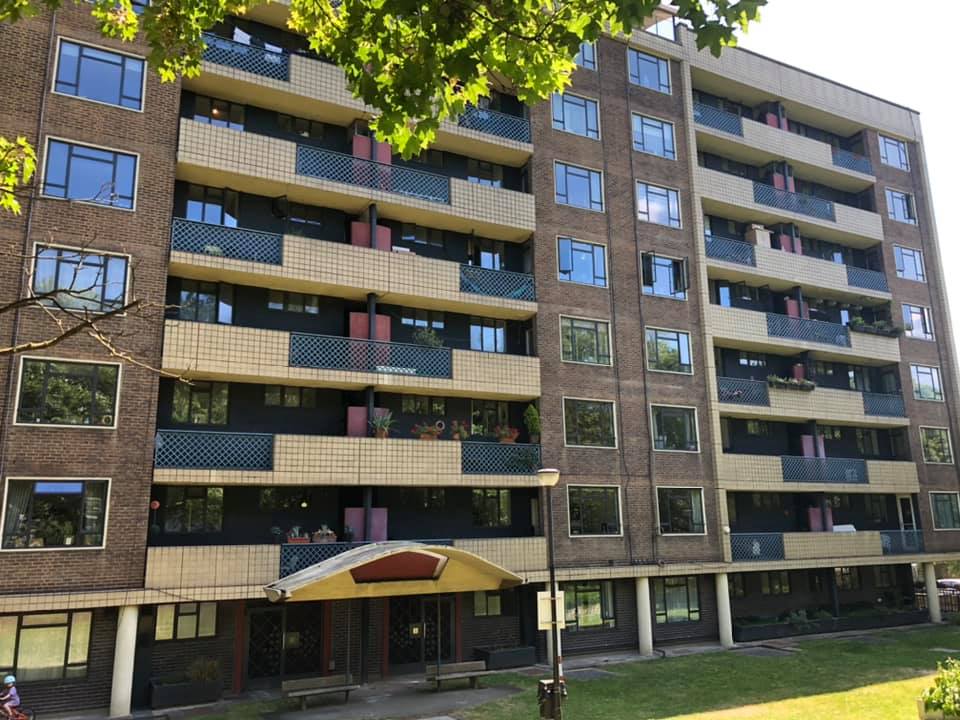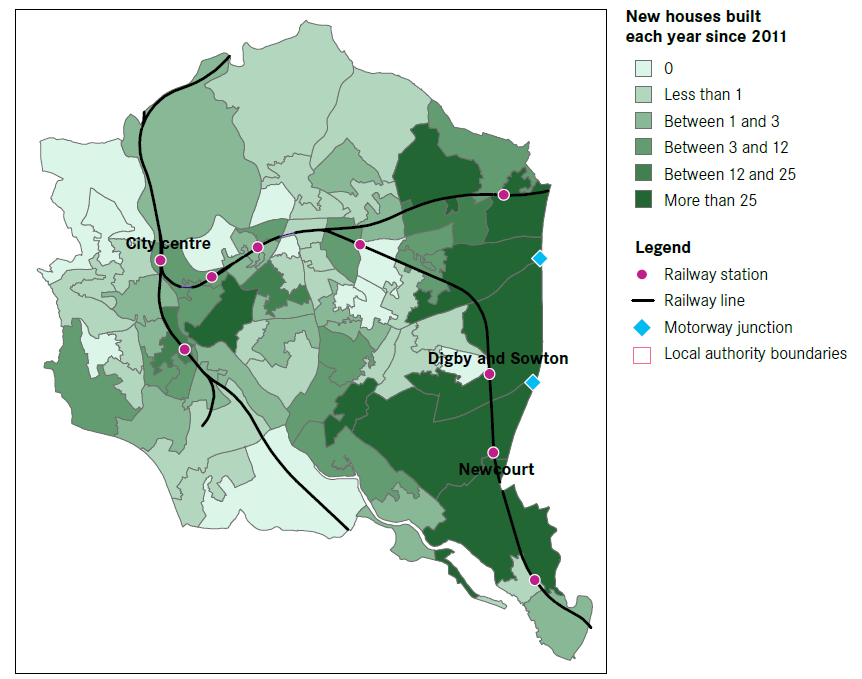Before recent local elections here in the UK, Dr Jenny Schuetz participated in an online Fabian Society member policy webinar: “Is flexible zoning the solution to the housing crisis?” hosted by Councillor Shama Tatler. Dr Schuetz discussed how in the United States land use practices have made it hard to build moderately priced housing.
Schuetz argues we have baked a lack of supply into our land use practices, especially for lower cost rental housing. She stated we don’t build enough smaller moderately price homes and that places with the highest rents are building the least amount of housing. Sadly, much like in the UK, the US has also designed a system that makes this an inevitable outcome.
The zoning system in the US differs somewhat from the UK discretionary planning system to some degree. For example, zoning in most parts of the US, including in large cities, reserves two-thirds to three-quarters of land for detached single family homes. Yet this system does allow you to build as of right. Effectively setting out a straight-forward set of rules on things such as size of lot and the height of building. If these follow rules can get permission without having to go through an extensive public process.
Long, complicated and uncertain processes provide significant barriers to housing affordability
For detached houses this is the norm. Should you want to build apartments or other types of housing then you must go through an additional approval process. It is this process that requires developers and housebuilders to show up in front of community meetings. Present plans, receive feedback, and requires formal approval from a local government body. Often a long, complicated, and uncertain process that provides a significant barrier to housing affordability.
Sound familiar?
Discretionary approval processes translate into much higher costs for housing that is approved and proposals often get stopped along the way. It is this element of the process that takes more time and costs more money. All because the existing process is set up to favour existing residents, in particular long-term homeowners.
For example, someone who may have lived locally for 30 years and doesn’t want their community to change. Schuetz argues these opinions are given more weight than someone who doesn’t currently live in the community. Meanwhile the person who shows up and says I would love to live here, but I can’t afford to move in so a new apartment would be great for me has their voice diminished.
Discretionary approval processes unfairly favour homeowners and existing residents
Dr Schuetz believes it is these approval processes that by design do not give equal weight to people who show up and talk at community meetings. She argues that suburban communities can often be where the problems are most acute. In these suburbs you find very large homes on large lots that are short distances away from public transit. Often where the median lot size is half an acre that only a single family can occupy. The only way to add more housing is to replace these single-family homes with more dwelling units. Under the current zoning system in the US such changes are explicitly prohibited.
But Schuetz isn’t just arguing for more large-scale apartment blocks. As this construction costs for these types of homes in such locations are often prohibitive. Instead, she argues for more row houses or condominiums that can be three, four, even up to six storeys where such methods of construction are feasible. In essence, the argument is to build more homes on those single-family plots. One of the nice things about this strategy is it does not require much land assembly from developers.
Schuetz also argues this kind of human scale development does not change the character of the community that much and offers substantial cost savings over new single-family homes. It is a strategy that can work in many places as doesn’t require big parcels of land or large-scale developers. Effectively it provides family sized businesses projects they are capable of delivering quickly.
Places in the US are exploring new ways to reduce barriers to housing affordability
Minneapolis provides an example of places exploring new ways to reduce barriers. In this city they effectively legalised duplexes in the Autumn of 2018. While in Oregon it also allowed state-wide reform for accessory dwelling units and duplexes. For apartment buildings the approach focuses on transit and commercial corridors. So, for six, eight, and ten storey apartment buildings, Massachusetts last year passed a state-wide rule recommending all localities allow apartments within certain distances of commuter rail stations.
Dr Schuetz noted how localities often find back-door rules to effectively not build things they do not want to build. The way zoning works is in the first instance the state can either prohibit apartment buildings or legalise them. If the state says they must legalise, then what dimensional requirements do you set? If a state decides it will only allow two storey apartment buildings, despite not being unviable, effectively it has prevented new homes from materialising. Other requirements include minimum parking standards that come with additional costs to each new unit of housing.
Legalising housing development is just the first step
There is an infinite number of restrictions to make it financially infeasible for developers states and localities can put in place. To achieve a flexible zoning system legalising apartments and middle housing is the first step. However, the further regulations will require attention as well if we want to see a meaningful response. State governments have a lot more authority over land use than the Federal government. They create local governments and designate their land use powers and fiscal authority.
Local governments fund services like schools based on local property taxes. Local finances impact decisions concerning new homes, as the are often assessed on local homeowners property values. States effectively can push back on localities if they want to do so. Meanwhile Federal government has very limited authority and few direct policy levers at its disposal to force the contrary.
Political opposition from locals who oppose change are the primary major barrier preventing moderately price housing
Unfortunately, effective policy solutions face steep political opposition and the politics on the ground is very similar in the US as it is in the UK. Long-term homeowners like the neighbourhoods the way they are and haven’t fully internalised how expensive it is to buy property today. They are often reluctant to change and are protective of their property values. All these personal, political, and financial incentives that reinforce the behaviour of long-term homeowners who carry a lot of weight in the political process.
Yes, there are tiny green shoots of promise in several cities and states. In place that have managed to achieve relatively small-scale reforms tinkering around the edge of the process. But we need to build more promising political coalitions against long-term homeowners. And yes, these coalitions must go much further if we are ever to get meaningful reform passed and more moderately priced homes.
Interested in housing development economics, property taxes and local public finance relationships in the US, incentives for zoning, and the politics behind it? Find out more in Dr Jenny Schuetz new book called “Fixer Upper How to Repair America’s Broken Housing System”.







